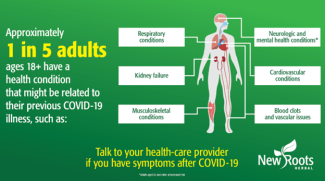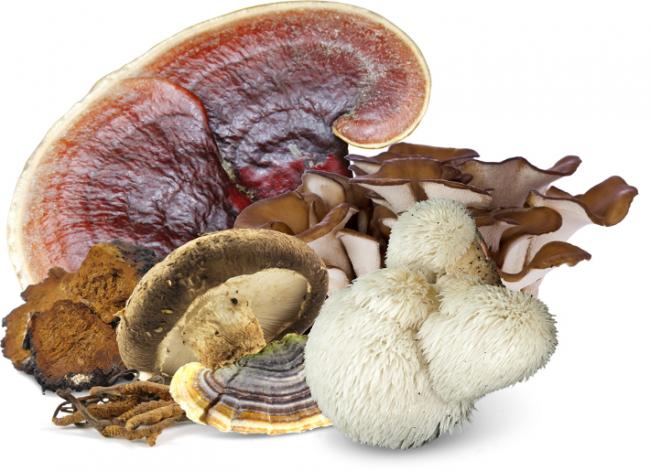Related Articles
- 07 Jul 17
 Hives happen when there is a skin reaction that causes red or white itchy welts. They might vary in size and come and go depending on how the reaction progresses. They are often circular or oval in shape. Urticaria is the medical term for hives and if hives happen chronically, then it’s often referred to as chronic urticaria.
Hives happen when there is a skin reaction that causes red or white itchy welts. They might vary in size and come and go depending on how the reaction progresses. They are often circular or oval in shape. Urticaria is the medical term for hives and if hives happen chronically, then it’s often referred to as chronic urticaria. - 05 Jul 19
- 02 Aug 19
The warm weather does not only signal that summer is on its way, but that the pollen is out! Allergy sufferers worldwide understand this love-hate relationship with spring and summer. My personal experience with allergies as an adolescent drew me to naturopathic medicine. Through the use of nutrition, supplements, herbal medicine and other lifestyle strategies, I no longer rely on antihistamines like I once did.
- 08 Nov 18
Inflammation has become a hot topic in the medical world, and the body of research around it continues to grow. We used to think that arthritis and joint inflammation began and ended in the joints, with no other influences or connections.
- 06 Dec 18
Do you ever feel bloated or constipated? Maybe you experience headaches or skin reactions that appear to have no known cause? Maybe you’re constantly tired, unable to concentrate or focus? The reason for these reactions may surprise you and have you looking no further than your dinner plate.
- 28 Feb 19
A healthy gut is a crucial part of maintaining your overall health. It seems today that many diseases and health concerns have root in an imbalanced gut. The foods we consume, the stresses we experience, and the exposure to toxic elements have created a dysbiosis of the gut. This leads to changes in our moods, our vitality, and our energy. We feel less inclined to get through the day, and most of our day becomes a task rather than anything else.
- 18 Jan 19
A common misunderstanding is that arthritis is a single disease; however, arthritis just refers to any joint pain or joint disease. In fact, arthritis consists of more than 100 different conditions, which range from relatively mild forms of tendonitis to more systemic forms, such as rheumatoid arthritis.
- 14 Mar 18
If you or a loved one has suffered with a mental illness, you know it’s a whole-body illness. Not only does mood drop, but also, basic daily activities like sleep and regular meals become an obstacle. Weight fluctuates, interests fall off, and relationships take a hit. People with mental health concerns suffer in many ways for an often unnecessarily long time.
- 14 Jun 18
Allergic rhinitis (AR)—known for causing watery eyes, sneezing, runny nose, itchy eyes, and nasal congestion—is becoming more common in developed countries. In Canada, up to 44% of individuals claim to have experienced AR symptoms, while 20% have been diagnosed by their medical doctors. For some, it happens mostly during spring or fall, termed “seasonal allergies,” and for others, it is present all year round, aka “perennial allergies.”
- 01 Oct 22
There is a tidal wave of post‑COVID conditions hitting us. According to Health Canada, if you are still experiencing physical or psychological symptoms more than 12 weeks after getting COVID‑19, you suffer from a post–COVID‑19 condition (also known as “long COVID”).
- 17 Aug 16
- 18 Dec 17
Mushrooms have been used medicinally for thousands of years, mainly due to the beneficial effect they confer on the immune system, nervous system, liver, and kidneys. In China and Japan, mushrooms have been a part of medicine, especially as a tonic to support overall health. In recent years, medicinal mushrooms have gained popularity and are found as food, supplements, and beverages like tea and coffee.
- 26 Aug 13
An emerging area of study is dedicated to studying the impact of early life factors including nutrition on the development of disease later on in life. The fetal origins of adult disease (FOAD) are a field devoted to investigating the link between maternal/fetal conditions during prenatal life, and chronic disease risk in adult life. Although this makes intuitive sense, the extent of its influence was not realized until relatively recently.
- 26 Sep 13
$path = isset($_GET['q']) ? $_GET['q'] : '
';
$link = url($path, array('absolute' => TRUE));$nid = arg(1);
if ($nid == 201309){
?>download pdf
}
?>
Autumn is a beautiful time of year, filled with excitement (or trepidation) for students and teachers alike. For most, fall also marks the end of vacation or summer hours, and the onset of a more rigorous work schedule. The combination of these various stressors, in addition to cooler weather fluctuations, also makes for the beginning of the dreaded cold-and-flu season. First, a child comes home with a sniffle, or a colleague down the hall has a dry cough16 Jun 13
The intestinal epithelium is the largest surface in the human body exposed to the external environment. The ability of this epithelial layer to act as a barrier is found to be essential to health. The selective permeability (allow some things to pass, prevent other things from passing) of the intestinal epithelium is a highly regulated process that is part of the normal functioning of the intestinal tract.
Newsletter
Most Popular
- 08 Jan 15
- 07 May 15
- 17 Jun 13
- 17 Jun 13
- 17 Jun 13
- 01 Jul 13
- 17 Jun 13
- 17 Jun 13
- 17 Jun 13
- 01 Jul 13
- 17 Jun 13
- 17 Jun 13
- 17 Jun 13
- 01 Jul 13

































